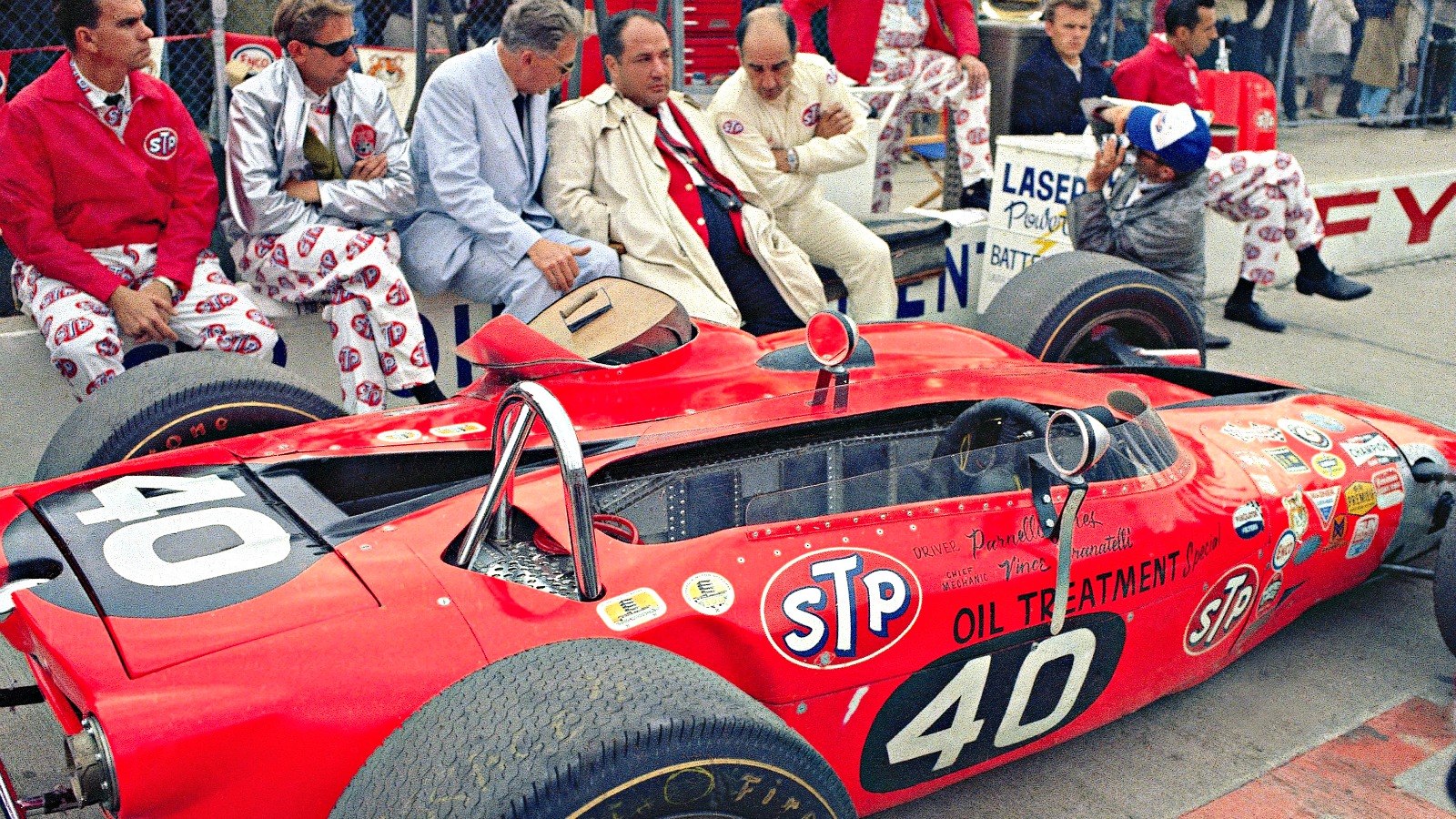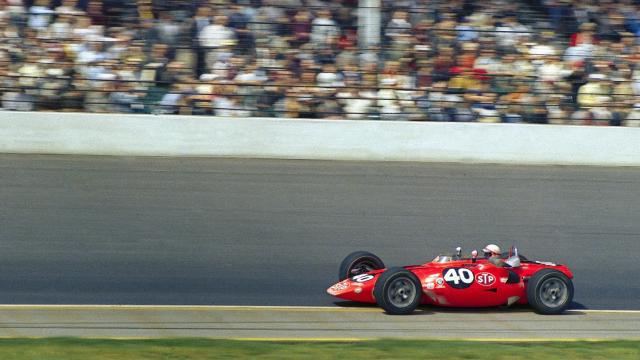While electric race cars and superbikes are all the rage these days, these wheeled power plants are hardly the first revolutionary engine technology. Why, back in 1967, one racing team blew more than a few minds when they dropped a genuine jet engine into their car and nearly drove it to victory at the Indianapolis 500.
The STP-Paxton Turbocar was designed by Ken Wallis and implemented by famed automotive engineer Andy Granatelli, a man who set more than 400 land speed records as chief tester for Studebaker and had already rattled the Indy racing league by introducing Ferguson four-wheel drive a few years prior. In 1966, Granatelli married this 4WD system with a 550 HP Pratt & Whitney gas turbine — adapted by Wallis for use on land — to create an entirely new kind of racecar.
The Turbocar looked, drove and worked like nothing else on the track. It utilised an incredibly light aluminium box frame that sat the driver next to the engine, rather than behind it. The car weighed in just 180kg over the minimum limit allowed by the USAC at the time.
It also lacked a gearbox and clutch, instead running the turbine’s power through a single-speed torque converter and on to the wheels. Drivers didn’t even need to step on the gas to pull away; the car idled at more than 50 per cent throttle so all they had to do was take their foot off the brake. This unique system did lead to some issues, however, like a three-second throttle lag between stepping on the gas and the car actually accelerating.

“Every single thing on the car except the wheels and the turbine engine was built in-house. Everything,” Granatelli told during an Indianapolis Legends interview in 2000. “And the reason we built everything in-house was because we didn’t want to go to any outside vendor to have them know that we were building a special race car. And when we built the car, it was built completely in the rules, completely in specifications.”
The Turbocar had actually been originally designed to run the previous year’s race but a production mishap had warped the car’s frame which had to be rebuilt but you wouldn’t know it the way the Turbocar performed in 1967’s Indy 500. It ranked sixth for the race with a qualifying speed of 267km/h, driven by Parnelli Jones. Once the race began, Jones jumped out to a sizable lead and held it for nearly the entire race. A torque-converter failure with just three laps to go, unfortunately doomed his chances of winning.
Still, the Turbocar performed well enough to rattle the racing institution. Just a couple of months after the 1967 Indy 500, the USAC desperately pushed through new regulations to effectively ban the engine technology, reducing the engine intake area 155 square centimetres to 103 square centimetres and instituting the rule change immediately rather than with the normal two-year lead time.
The STP team tried again in 1968 with driver Joe Leonard but again the car failed just before the finish — this time from a faulty fuel pump. That spelled the end of the Turbocar, though many of its design features would be incorporated by the rest of the field over the next decade. STP originally donated the Turbocar to the Smithsonian but you can find it today at the Indianapolis Motor Speedway Hall of Fame Museum.
[Popular Mechanics – Replicarz – Road and Track – Wiki]
Pictures: AP
